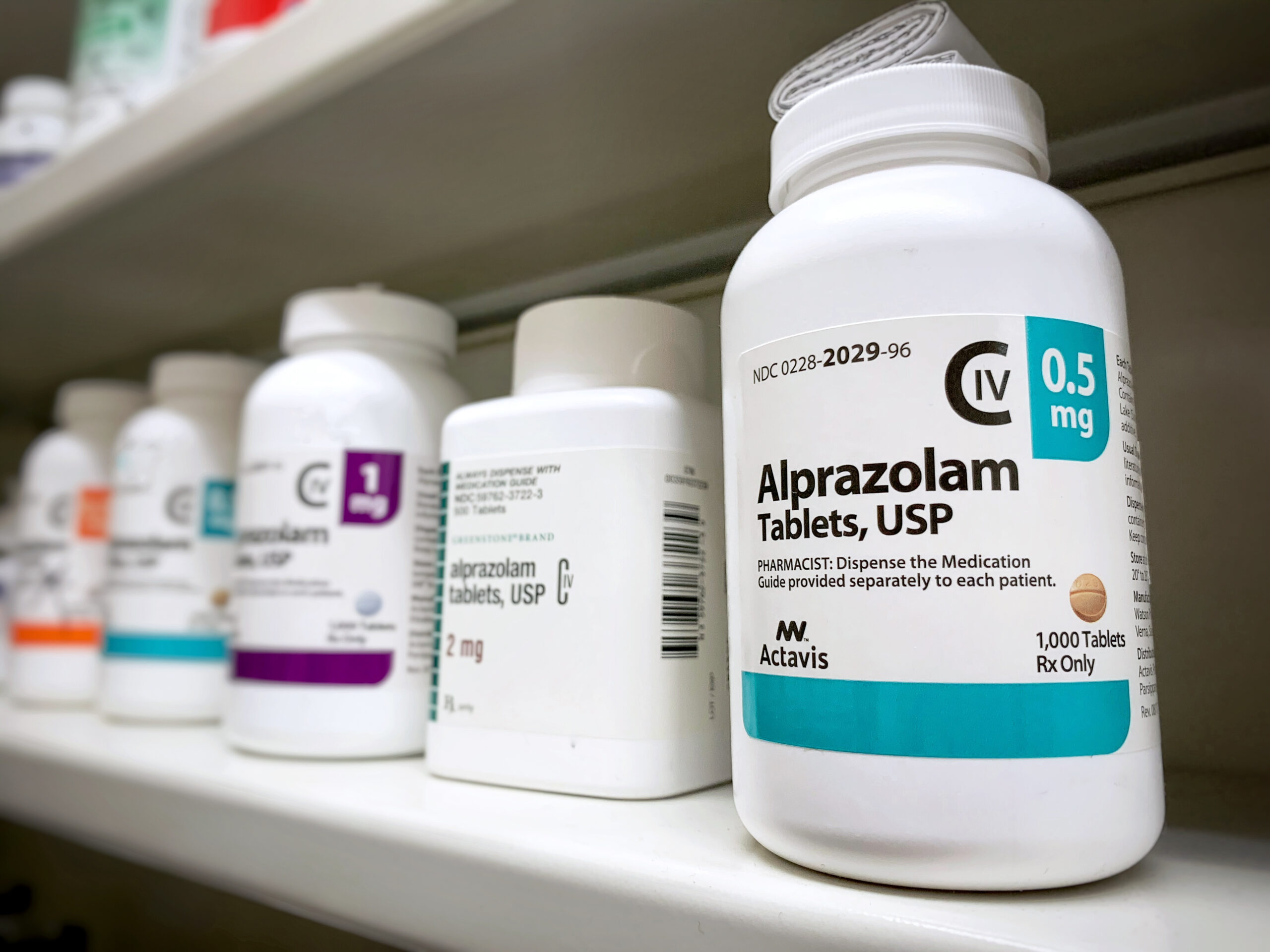USC-Yale Roybal Center for Behavioral Interventions in Aging
USC-Yale Roybal Center for Behavioral Interventions in Aging
Program Leadership
Mission

To advance value-based care through randomized trials and to understand mechanisms of behavior change to promote healthy aging.
Specific Aims
- Understand mechanisms of behavior change that will improve the general effectiveness of interventions that address overuse and underuse of health services in aging populations
- Address crucial problems relating to translation and development of patient- and provider-facing
Interventions
Solicit, select, and facilitate implementation of 10 randomized trials that evaluate interventions and mechanisms of behavior change
The application for the 2025-2026 funding period is now open – see details here.
Co-Investigators for the Roybal Center

Co-Director, Aging and Cognition Program, USC Schaeffer Center
Senior Scholar, USC Schaeffer Institute
Associate Professor, USC Leonard Davis School of Gerontology

Co-Investigator and Biostatistician, USC-Yale Roybal Center for Behavioral Interventions in Aging
Associate Professor of Biostatistics, Yale School of Public Health

Co-Investigator and Biostatistician, USC-Yale Roybal Center for Behavioral Interventions in Aging

Co-Investigator and Clinical Advisor, USC-Yale Roybal Center for Behavioral Interventions in Aging
In Focus View All
‘Nudges’ to Reduce Opioid Overuse Also Decrease Inappropriate Benzodiazepine Prescriptions
Current Roybal Center Training
The Roybal Center funds one post-doctoral fellow to work on research that advances the behavioral sciences. The selected post-doc has access to mentorship and a broad array of resources and data available through the Schaeffer Center.

Chasing Fictitious Variation: Random Outcomes are Misattributed to Skill in Competitive Environments
Craig Brimhall, PhD
Craig Brimhall is a Postdoctoral Fellow at the USC-Yale Roybal Center for Behavioral Interventions in Aging. His research interests include decision making under uncertainty, goal-achievement, and using insights from behavioral science to help people make healthier choices. He received a PhD in Management from the University of Utah, an EdM in Educational Neuroscience from Harvard University, and a BS in Finance from Utah Valley University.
Current Roybal Center Pilot Awardees

A Randomized Trial to Reduce Inappropriate Prescribing to Older Adults Visiting the Emergency Department
PI: Daniella Meeker, PhD
The goal of this work is to conduct a 3-arm cluster randomized trial comparing the effectiveness of medication safety feedback delivered by peers and by anonymous systems to standard of care in 9 emergency departments. This intervention is a modification to the “Enhancing quality of prescribing practices for older adults discharged from the Emergency Department” (EQUiPPED) protocol that optimizes feedback about Potentially Inappropriate Medications (PIM) applying previous findings from behavioral science. Feedback will be modified in the following ways: 1) messages will incorporate aspirational norms – benchmarked to top performing peers rather than the larger distribution, and 2) feedback will be delivered in simplified, tailored messages with actionable recommendations that direct prescribers’ attention to their highest volume PIMs and the alternative therapeutic options from the Beers guidelines. Attending physicians in all groups will receive education of ACEP Beers Criteria at baseline, the control group will continue with Standard of Care.

A Randomized Trial to Encourage Older Adults to Designate a Health Care Proxy
PI: Mireille Jacobson
Designation of a health care proxy reduces surrogate distress, anxiety, and grief, and State and Federal health care quality performance programs continue to offer payments to providers for at least attempting advance care planning (ACP) conversations. Yet only one in three adults in the United States has completed an advanced care plan. Behavioral science may inform our understanding of mechanisms that relate to the poor uptake of health care proxy designation. Patients aged 65 years and older will be randomized to one of 3 study arms: (1) a usual care or control arm that continues to get all standard messaging and materials about ACP, (2) an intervention arm that receives the health care proxy forms and links to online tools or (3) an intervention arm that receives the health care proxy forms and links to online tools along with a planning prompt that encourages the patient to list their health care proxies on a brightly colored index card and bring it with them to their upcoming primary care physician appointment to discuss with their providers.
More information about current and past pilot awardees
Optimizing Interventions by Baseline Motivation to Close Care Gaps
Co-PIs: Hengchen Dai and Silvia Saccardo
Preventive care (e.g., cancer screenings, diabetes tests) and disease management (e.g., taking recommended medications) are important, especially among aging adults that are at increased risk for many detectable diseases. Finding cost-effective interventions to close care gaps in preventive care and disease management is valuable not only for optimizing the well-being of aging individuals but also for improving population health at the societal level. This proposal builds on the premise that changing behavior requires two stages: 1) establish some intentions to act and 2) turn such intentions into action (Heckhausen & Gollwitzer, 1987). Capitalizing on this intention-action framework, this proposal classifies interventions into intention-oriented interventions and action-oriented interventions, depending to the stage of behavior change they target. We theorize that the efficacy of these two classes of interventions depends on the stage individuals are at along the path to behavior change (i.e., their baseline motivation), with intention-oriented intervention being effective among individuals with low baseline motivation and action-based interventions being effective among individuals with higher baseline motivation. This proposal aims to test the impact of intention- and action-oriented interventions on closing care gaps, understanding whether their effectiveness depends on individuals’ baseline motivation (i.e., the stage individuals are at in the path to behavior change), and examine their separate and joint impact.
Gain and Loss Framing for Text Messaging to Reduce Hazardous Alcohol Use
PI: Alexis Kuerbis
There is an urgent call for efficient and effective assessment, prevention, and intervention among older adults to reduce health risk of hazardous drinking, encourage healthy aging, and reduce burden on healthcare systems. Text messaging health interventions are considered an effective, scalable medium to deliver behavioral health interventions, and they have been used as evidence-based solutions in primary care settings among older adults for behaviors other than alcohol use to supplement traditional care. The primary objective of the proposed study is to evaluate effectiveness of scalable, tailored text-messaging programs for alcohol use among older adults. We focus on gain and loss framing of behavior change goals: Loss-framing is used to motivate individuals to avoid future problems by focusing on the consequences of the status quo, and gain-framing is used to facilitate progress by focusing on the benefits of change. We will design and evaluate three text-messaging programs using a randomized controlled trial: (A) Loss-framed messaging (B) Gain-framed messaging; and (C) Combined (loss and gain) messaging among a sample of 150 older adults with hazardous drinking. We will compare the proximal and distal effects of loss versus gain framed messaging on drinking behavior and attrition from the study, as well as the moderating effects of gender and age.
Precision Vaccine Promotion in Underserved Populations
PI: Daniella Meeker, PhD
Previous studies have shown that low-cost, behavioral nudges through texting can increase influenza vaccination uptake compared to usual care. However, there are limited studies that evaluate the effect of decreasing barriers to scheduling, especially within safety net populations. The setting for this trial, the Los Angeles County Department of Health Services, is the second largest public delivery system in the country, and serves approximately half a million diverse patients that are eligible for vaccinations annually. This pilot study (one arm in a larger randomized controlled trial) will examine the effect of text messages highlighting MediCal health plan transportation resources (vs standard text messaging) on influenza vaccination rates during the 2022-2023 flu season.
Incentives for Physical Activity
PI: Anya Samek, PhD
Inactivity is the fourth leading risk factor for global mortality, leading to chronic diseases (e.g., heart disease, diabetes, cancer) and contributing to the obesity epidemic. Much of the world’s population is inactive, and older adults are at highest risk. Incentive-based interventions show promise for improving activity levels; however, monetary incentives are often not scalable and effects fade when incentives are removed. In light of the limited success of incentives-based behavior change programs, we will design and evaluate alternative incentives that address the challenges of scalability, habit formation and crowd-out. The objective of this study is to use a randomized, controlled trial to test the effectiveness of behaviorally-motivated (“alternative”) incentives to increase walking among older adults (ages 60+). Participants in the treatment group will use an app – Vizer – which provides incentives for meeting step targets, including points that can be redeemed at participating retailers and meal donations made on behalf of the participant.
Gamification to Improve Physical Activity in Seniors at Risk for Alzheimer’s
PI: Ryan Greysen, MD, MHS
Increased physical activity by walking further or more vigorously may prevent or delay the development of Alzheimer’s Disease and Related Dementias (ADRD) but reaching higher levels of activity and maintaining it as a long-term habit is difficult to do. This pilot proposes a 2-arm, randomized, controlled trial to evaluate this approach to increase physical activity over 12 weeks with 6 weeks of follow-up (18 weeks total). We will enroll 100 participants at risk for developing ADRD using the GeneMatch registry. We will select only participants who already know results of their genetic testing (APOE4) and will create a sample with 50% who have elevated genetic risk (APOE4 carriers) and 50% who do not have elevated genetic risk (APOE4 negative). We will use wearable devices to measure daily step counts (primary outcome) and validated surveys to assess cognitive and functional measures. We will focus on the following aims: Aim 1. To evaluate the effectiveness of a 12-week behaviorally designed gamification intervention to increase physical activity among adults age ≥ 55 at risk for ADRD; Aim 2. To evaluate the sustainability of increased physical activity during a 6-week follow-up period; Aim 3. To explore effect of risk perception on physical activity during 12-week intervention and follow-up period; and Aim 4. To assess feasibility of collecting cognitive and functional measures remotely.
A clinician-focused nudging intervention to optimize post-surgical prescribing
PI: Daniel B. Larach, MD, MSTR, MA
There are considerable data that postoperative opioids are commonly prescribed in excessive amounts but few evidence-based techniques to optimize such prescribing. The specific objectives of this study are to (1) evaluate the hypothesis that a novel nudge intervention will reduce excess postoperative opioid prescribing; and (2) determine whether this technique affects opioid consumption, refill requests, medical visits for pain, analgesia satisfaction, and opioid misuse. This pilot randomized controlled trial will randomize surgeons (1:1) to intervention (direct feedback to surgeons about patients’ opioid prescription-to-consumption ratios) or control (no feedback) arms. Patients undergoing elective surgery during days 1-30 will be contacted by telephone 30 days postoperatively (study days 31-60) for an opioid pill count; they will also be asked about a variety of secondary pain and opioid-related measures. After study day 60, surgeons in the intervention arm will be provided procedure-specific direct feedback on opioid prescribing and consumption for their patients who had surgery during days 1-30. Where available, extant surgery-specific evidence-based prescribing recommendations will also be communicated to surgeons in the intervention group. Pre-post change in opioid prescription size (measured in oral morphine equivalents) from baseline between the two groups for surgeries performed during days 61-90 (the primary outcome) will be assessed. The specific primary outcome will be mean percentage change in procedure-specific prescription size. Mean per-surgeon percentage change in prescription size will then be compared between the direct feedback and no-direct-feedback groups. Secondary outcomes will be assessed by contacting patients having post-intervention surgeries (days 61-90) 30 days postoperatively (days 91-120).
Helping hypertension patients to interpret blood pressure readings
PI: Wandi Bruine de Bruin, PhD
Only about 50% of hypertension patients have good blood pressure control. Patients with low health literacy have worse blood pressure control, perhaps because they find it harder to interpret whether blood pressure readings are high or low, reflect good or bad blood pressure control, and indicate a need for behavior change or medication us The American Heart Association has called for broad efforts to help empower hypertension patients from different backgrounds to control their blood pressure. Therefore, we will evaluate different ways for helping hypertension patients to interpret their blood pressure readings and motivate blood pressure control, in hypertension patients varying in health literacy, age, and socio-economic status. Our strategy is based on insights from behavioral science studies, which suggest that people find it easier to interpret numbers when they can see the range of possible numbers. Aim 1: Based on insights from behavioral science and our team’s communication expertise, we will create 3 blood pressure communications: (A) a basic table showing only the normal blood pressure range, which is often used in clinical practice and online communications about blood pressure, but may make it hard to interpret numbers outside of the normal range, potentially undermining behavior change intentions; (B) an enhanced table showing how combinations of diastolic and systolic blood pressure reflect normal, elevated and hypertension ranges, from the American Heart Association; (C) an enhanced graph to be adapted from Blood Pressure UK to show the same color-coded ranges as the enhanced table, with diastolic blood pressure on the x-axis and systolic blood pressure on the y-axis. Aim 2: : In a sample of 650 diagnosed hypertension patients recruited through the Pitt+Me Patient Registry at the University of Pittsburgh Medical Center (UPMC), the investigators will evaluate whether being presented with the enhanced table or graph (vs. basic table) affects patients’ self-reported blood pressure measurement (as averaged across two measurements taken at the time of the survey at least 1 minute apart, as per directions of the American Heart Association), and improves interpretations of these two blood pressure readings and of hypothetical blood pressure readings, as well as behavior change intentions Aim 3: We will examine whether Aim 2 findings vary by health literacy, age, and SES.
Comparative Effectiveness of Two Letters to Encourage Judicious Prescribing of Opioids: A County-wide Project in Los Angeles
PI: Jason Doctor, PhD
Prescribers invited to join efforts to exercise more careful use of opioids may be more likely to do so after they have been made aware of an opioid death in their practice. Many physicians underestimate the risk of opioids in their own practice, and currently, there is no mechanism for medical examiners to identify prescribing physicians, nor for physicians to be alerted about deaths, despite substantial interest from the CDC to solve this problem. In collaboration with the Los Angeles County Medical Examiner’s Office and the State of California’s controlled Substance Utilization Review and Evaluation System (CURES), we reviewed opioid poisonings over a 12 month timeframe and sent letters to prescribers in Los Angeles County when at least one of the provider’s prescriptions was filled by a patient who died of an opioid poisoning. Prescribers were randomized to one of two letter versions (Letter A and B). The letters were factual and nonjudgmental, signed by the County Medical Examiner, and stated that a patient they had treated with controlled substances died of an opioid poisoning. The letters encourage judicious prescribing and provide information on how to identify and taper unsafe regimens (high dose, polypharmacy, or use of multiple prescribers); how to identify addiction and compassionately refer patients for medication-assisted treatment; and recommendations to avoid bad outcomes (e.g. do not fire your patient for signs of addiction.) The letters also encourage use of the CURES system before prescribing, as well as co-prescribing of naloxone. Letter B also included additional text involving an “if/when/then statement” along with an injunction to providers to share safety information with patients so that they identify as a “safe prescriber.” Our analysis will assess changes over time before and after the intervention in natural log-transformed milligram morphine equivalents (MME) between the two treatment conditions.
Feasibility of Nudging Providers to Initiate Buprenorphine
PI: Rebecca Trotzky-Sirr, PhD
Buprenorphine is an opioid medication that treats opioid use disorder by tightly binding brain opioid receptors and blocking the euphoric effects of other opioids. Despite widespread provider training and institutional support, only a fraction of eligible patients has initiated buprenorphine to date. This implies that behavioral interventions that impact physician practice may be required to overcome barriers like stigma and peer support. This project aims to (1) Assess barriers and attitudes associated with physician-initiated Medication-Assisted Treatment (MAT) in uninsured, underserved, and homeless populations with opioid use disorder; and (2) Develop nudge-based intervention strategies targeting providers’ decisions. We will purposefully select 10 physicians at the Urgent Care Center (UCC) at Los Angeles County & University of Southern California and the Star Clinic that represent different levels of prescribing and different levels of factors predictive of prescribing patterns determined in a retrospective analysis. Structured interviews will be designed to inform how to overcome clinical inertia with regard to buprenorphine initiation. Interview topics will orient towards (a) key variables identified as barriers to initiation and (b) aspects of provider behavior including dimensions of commitment and professional and social competitiveness. Nudge development will depend on the results of the qualitative analysis but will consider key social motivations and workflow barriers that may be addressed with nudges; a preliminary evaluation of nudge feasibility will also be conducted.
USC-Yale Roybal Implementation Network
This project is supported by the National Institute on Aging under the National Institutes of Health, award number P30AG024968. The content is solely the responsibility of the authors and does not necessarily represent the official views of the National Institutes of Health.


